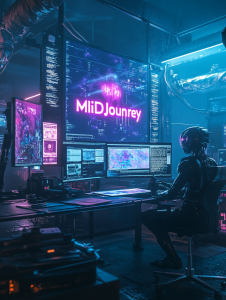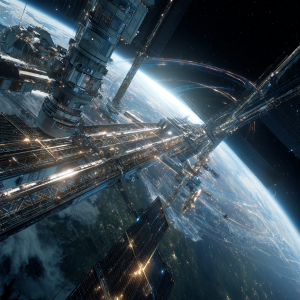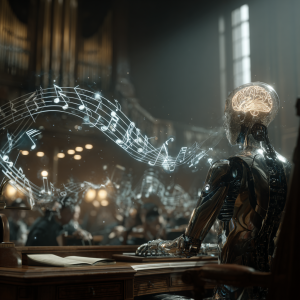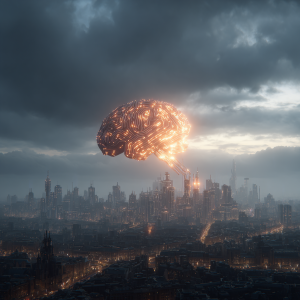Imagine this: You’re sitting at your desk, sipping coffee that’s already lukewarm, staring at a blank page, and praying for the gods of inspiration to show mercy. But then—BAM! You type a sentence, and a neural network paints your thoughts into a digital masterpiece. No brushes, no mess, no tortured artist vibes—just pure, AI-powered sorcery.
Welcome to the realm of MidJourney, where creativity meets code, and humans collaborate with machine minds to craft visual wonders. It’s not Photoshop, it’s not your cousin’s AI-generated meme generator—it’s something far more magical (and occasionally, unnervingly surreal).
In this article, we’re taking a full-on plunge into the world of MidJourney. We’ll uncover when it was born, who’s the wizard behind the curtain, how it works, why it matters—and yes, we’ll take a peek at the fierce AI image wars brewing in the background.
So buckle up, fellow tech explorer—this isn’t your average “how to make an image with AI” story. This is Tech and Top Specs, and today we’re sketching the neural Renaissance with MidJourney.
Author’s Note: Most of the images you see in this article—and on my blog in general—were created with MidJourney, my go-to tool for visual storytelling. I love the style and depth it brings to even the wildest ideas. To get the best results, I often ask ChatGPT to help me refine my prompts (you’ll often catch me typing things like “You’re the prompt expert, help me create an image for…”). It’s become part of my creative workflow. Lately, I’ve even started using these AI-generated visuals as a springboard for video concepts.
A Short Origin Story: The Birth of MidJourney
MidJourney didn’t just pop up out of nowhere—it emerged in early 2022, smack dab in the middle of a creative revolution where machine learning models were suddenly capable of spitting out poems, paintings, and (let’s be honest) quite a few digital monstrosities too.
While OpenAI’s DALL·E 2 was busy charming Silicon Valley with its image-generation wizardry, MidJourney quietly launched its own AI-powered engine—but with a twist. It wasn’t about photo-realism or textbook perfection. MidJourney went straight for the vibes: dreamy, textured, cinematic imagery that felt like it came from the subconscious of a robot who’d read too much fantasy fiction.
And guess what? It worked.
By mid-2022, MidJourney’s popularity exploded, especially among digital artists, designers, futurists, and even lawyers with a creative itch (looking at you, dear reader). Its secret sauce? A strong aesthetic bias, intense visual stylization, and an oddly addictive Discord-based interface.
Who’s Behind the Magic?
Unlike the usual tech giants that dominate AI headlines, MidJourney is the brainchild of David Holz, a name you might recognize if you’re into science, startups, or spatial computing. Before launching MidJourney, Holz co-founded Leap Motion, the hand-tracking company that made Minority Report-style computing feel almost possible.
Holz is a trained scientist, not your typical Silicon Valley mogul. His approach to AI is less “disrupt the economy” and more “what if AI could be a tool for the imagination?” Under his leadership, MidJourney was shaped not as a product for productivity, but as a platform for creativity.
Oh, and here’s the kicker: the company is small. Like, really small. As of 2024, MidJourney is still operating as a tiny, self-funded lab of fewer than 20 people. No flashy headquarters. No venture capital overlords. Just a highly talented team and a server farm full of machine learning magic.
How Does MidJourney Actually Work?
Let’s get a little nerdy (but stay sexy, obviously). MidJourney, like its AI art siblings DALL·E and Stable Diffusion, is based on diffusion models. Here’s the elevator-pitch explanation:
- You feed the model a prompt—a sentence, a phrase, or a poetic fever dream.
- The AI starts with random noise (like visual white noise).
- Through a process of iterative refinement, it “denoises” the image step-by-step, aligning the visual elements with the meaning of your words.
- Voilà: You get an image that reflects your prompt (sometimes astonishingly well, sometimes… hilariously not).
But MidJourney adds its own flavor to the mix. Its model is custom-trained, and while the exact training data is not public (cue the transparency debate), it’s widely assumed that it includes a vast mix of licensed images, public datasets, and web-crawled content.
Crucially, MidJourney leans heavily into stylization. Where DALL·E tries to interpret prompts realistically, MidJourney interprets them artistically. Think soft lighting, moody palettes, Baroque textures—even if you just asked for “a cat riding a unicycle under moonlight.”
The Discord Decision: Genius or Chaos?
Here’s one of the boldest design choices MidJourney made: it runs entirely through Discord.
Yes, that Discord. The gamer chat app turned community platform.
Instead of building a fancy UI or mobile app, MidJourney operates via Discord bots. You join the server, enter a command like /imagine a futuristic city made of glass, and the bot responds with a grid of four generated images. Choose your favorite, upscale it, tweak it, or remix it—it’s collaborative, public, and fast-paced.
This choice turned out to be weirdly brilliant:
- It created an instant community.
- Users could watch each other’s prompts in real time (hello, inspiration).
- It lowered the barrier to entry—no software to install, no accounts to configure.
On the flip side? It’s also overwhelming. The main Discord server often feels like a chaotic art rave with thousands of people generating visuals all at once. But hey, art should be a little wild.
Legal Puzzles and Copyright Chaos
Let’s not ignore the elephant in the courtroom: Is this legal?
AI-generated images—especially those trained on potentially copyrighted material—live in a legal gray zone. MidJourney, like most AI image generators, doesn’t disclose all training data, which has sparked lawsuits and a flurry of hot legal takes.
A few juicy questions currently on the AI-law menu:
- Is an AI-generated image copyrightable if no human directly created it?
- Can artists sue if their work was used to train the model?
- What rights do you have over your generated art?
Spoiler: The law hasn’t caught up. In the US and EU, courts are still trying to decide how to deal with AI-generated content. Meanwhile, platforms like MidJourney provide non-commercial licenses by default (unless you’re on a paid plan), and warn users to double-check usage rights—especially for client work.
Bottom line? If you’re using MidJourney professionally, read the license. If you’re using it to generate meme art of Napoleon riding a space-dolphin… you’re probably fine.
MidJourney Today: The State of Play
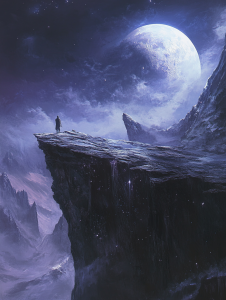
As of mid-2025, MidJourney is on its Version 6, and it keeps getting better:
More coherent hands (yes, finally).
Better lighting control.
Advanced prompt features (aspect ratios, stylization weights, custom styles).
Integration with personal style training (train the model on your own artwork).
The company is also experimenting with interactive tools, allowing users to fine-tune images post-generation with AI assistance. Think Photoshop meets AI meets wizard school.
Despite its modest size, MidJourney has influenced the entire field of generative art. From fashion designers to architects, educators to marketers—people across industries are using it to brainstorm, storyboard, and visualize the impossible.
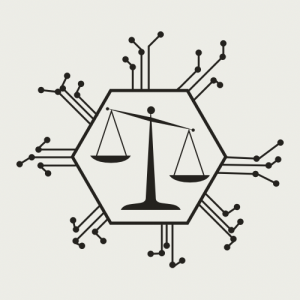
Final Thoughts
MidJourney is one of the most exciting tools in the generative AI ecosystem—not because it’s the most powerful or realistic, but because it invites us to create. It’s imperfect, weird, occasionally chaotic—but undeniably inspiring.
Whether you’re an artist, a lawyer, a teacher, or just someone who wants to see what “a courtroom made of jellybeans” looks like, MidJourney opens doors.
The future of visual storytelling isn’t just human anymore. It’s collaborative, computational, and beautifully unpredictable.
So go ahead—type in a prompt. Let the machine dream. And don’t forget to credit your new robot muse.
Stay curious, stay informed, and let´s keep exploring the fascinating world of AI together.
This post was written with the help of different AI tools.

